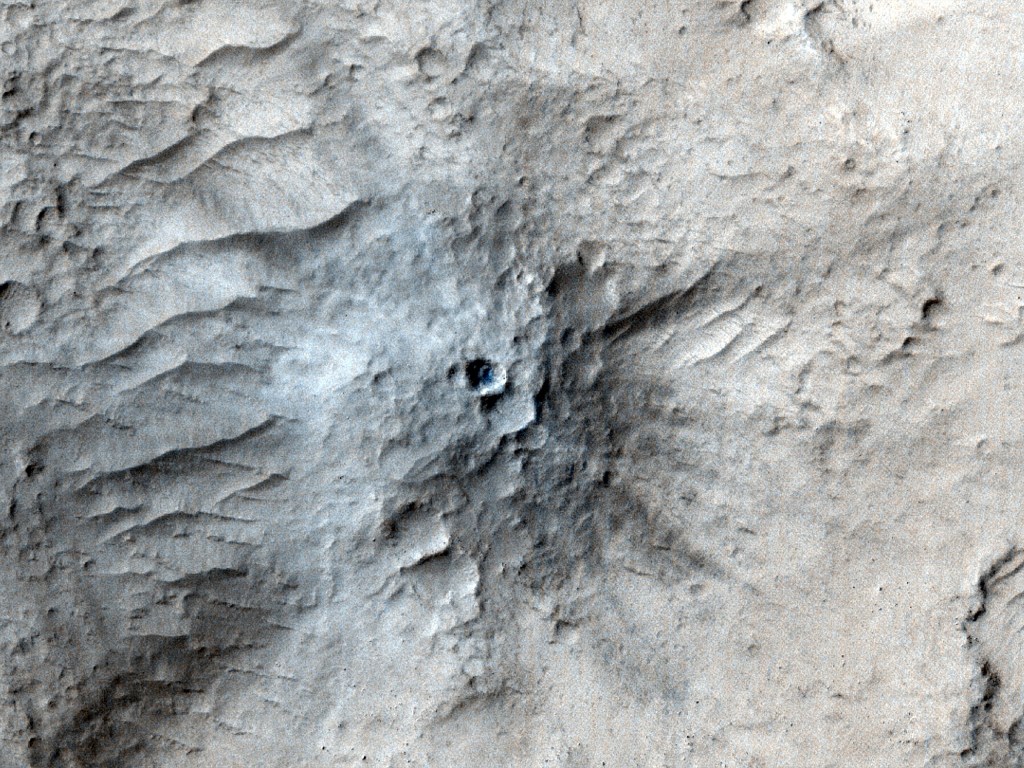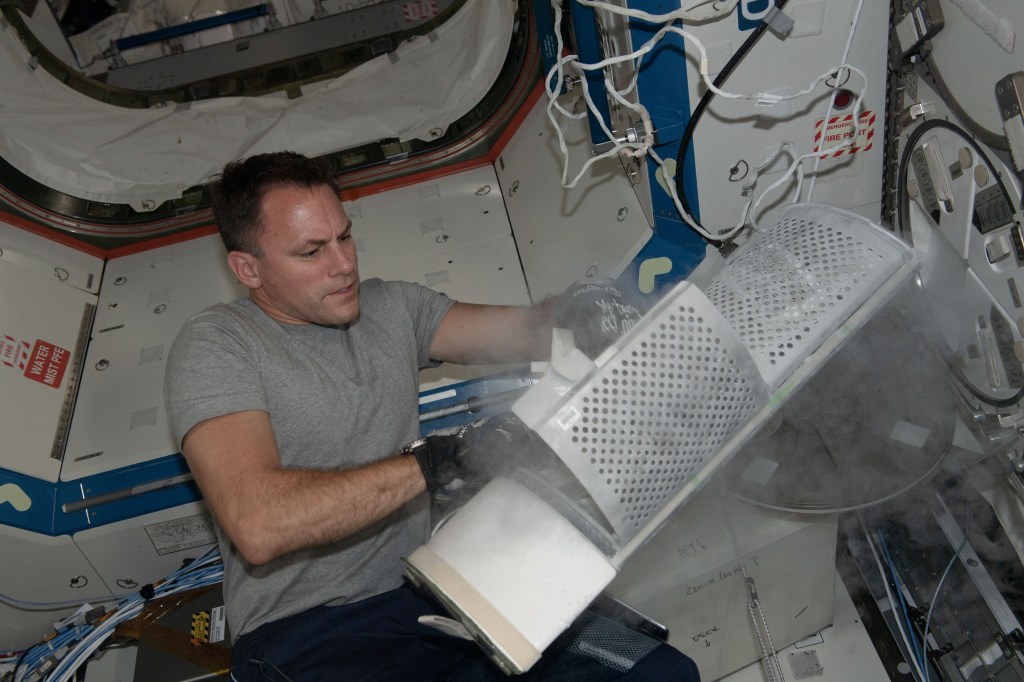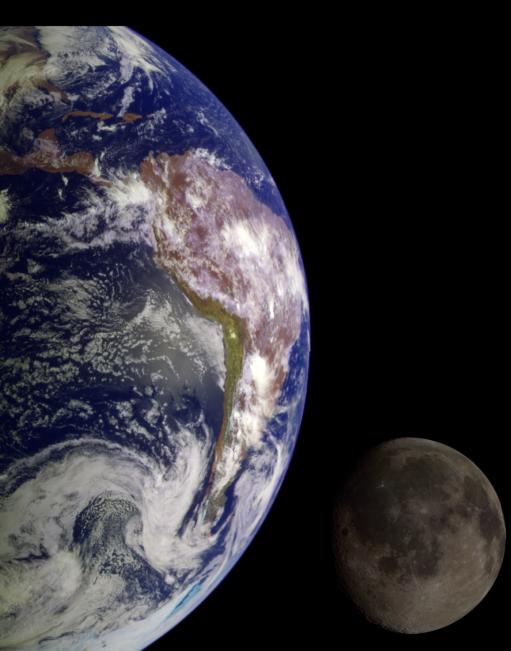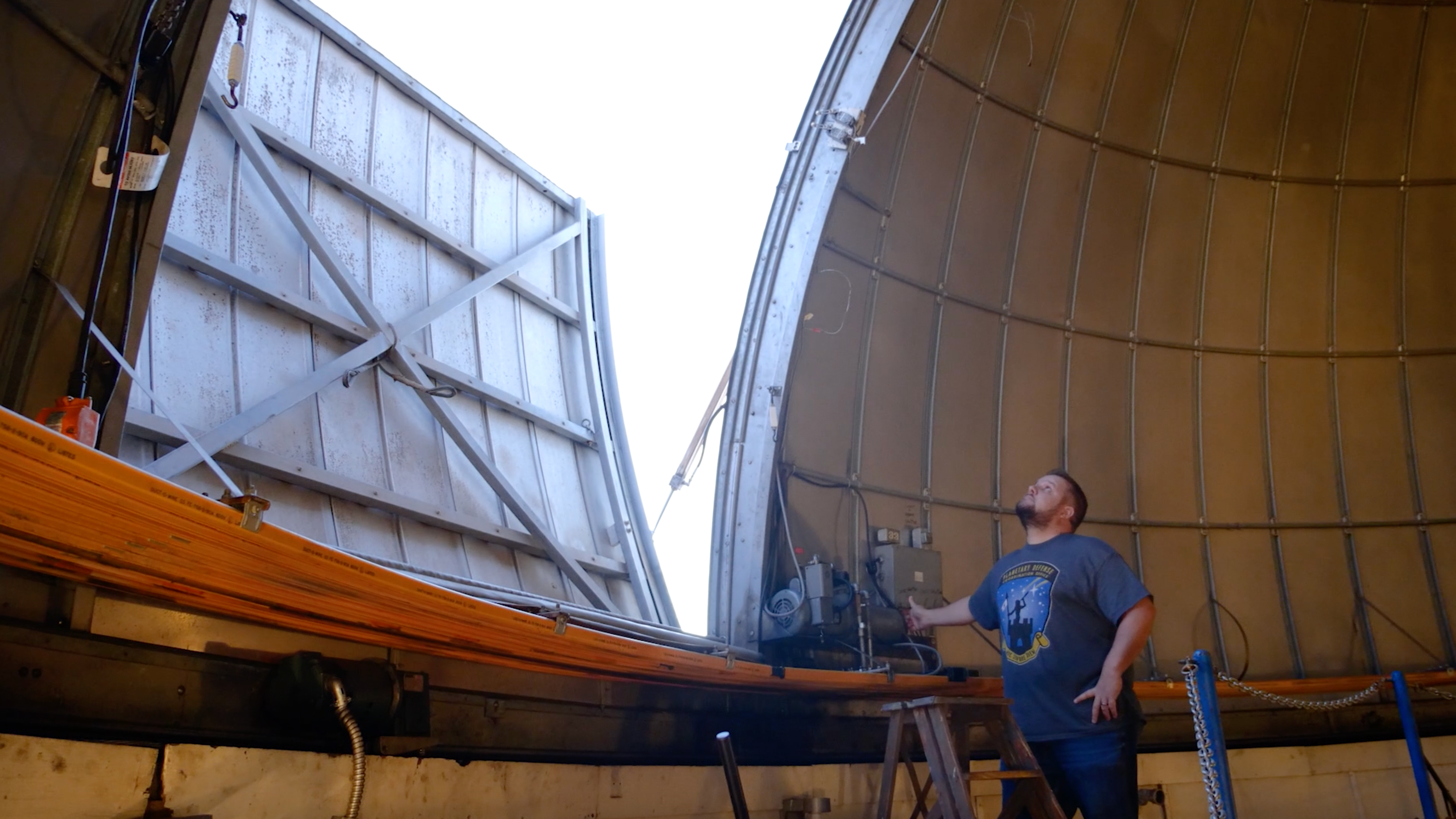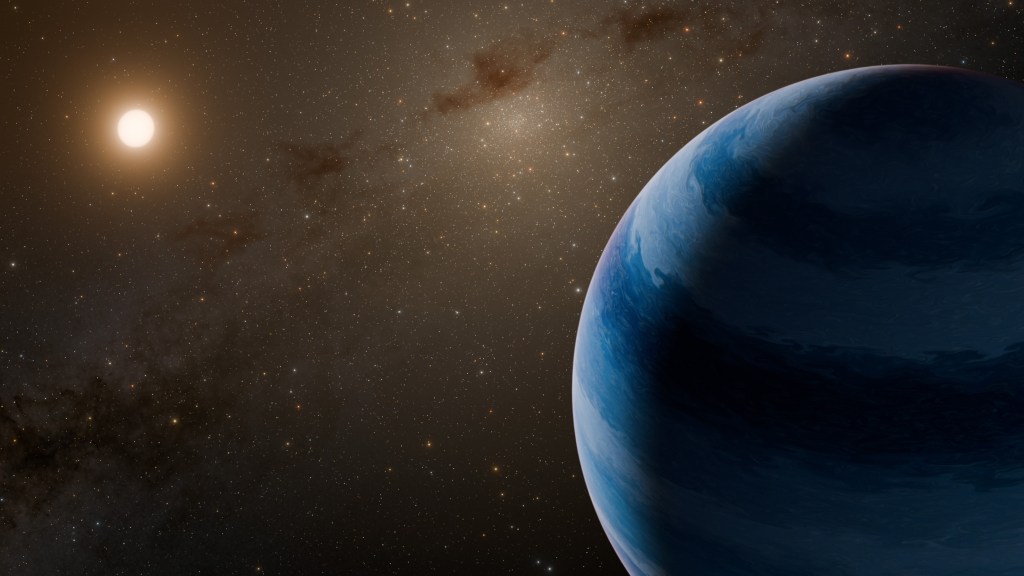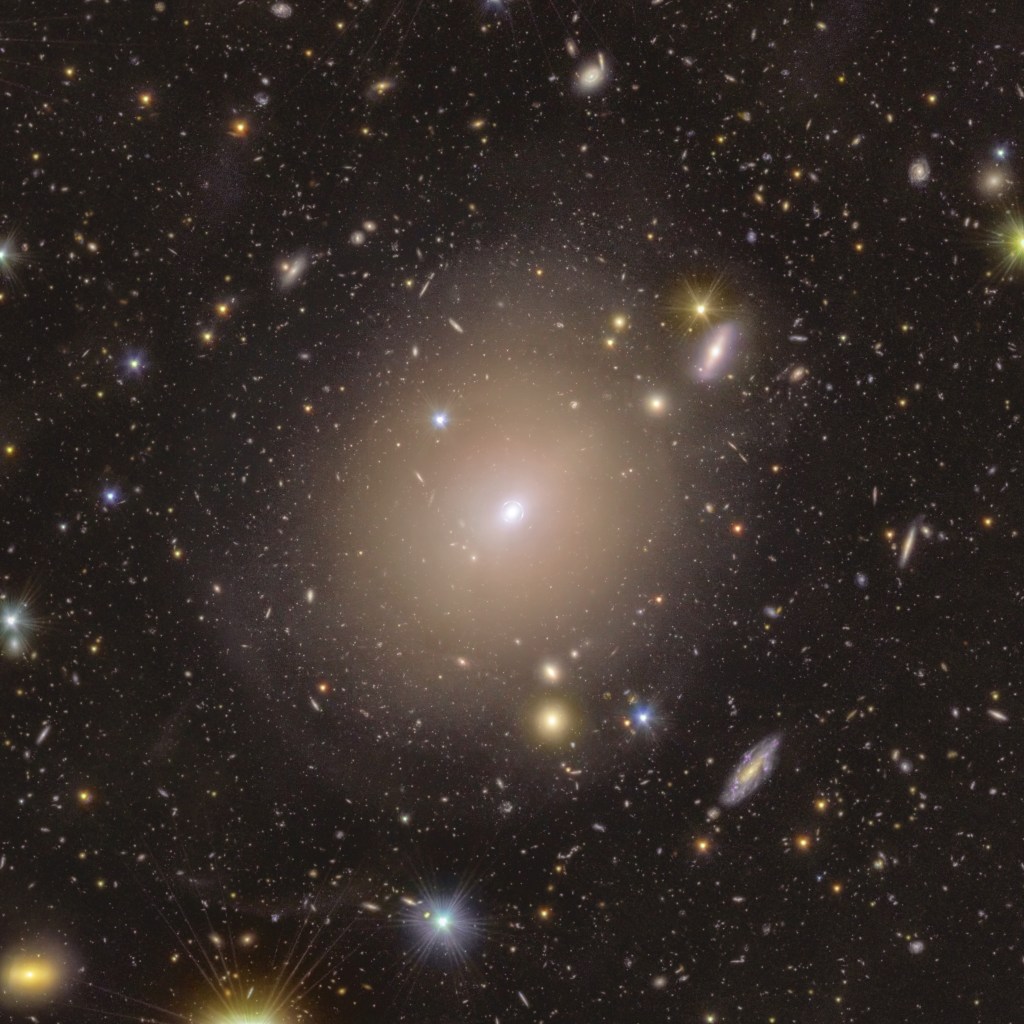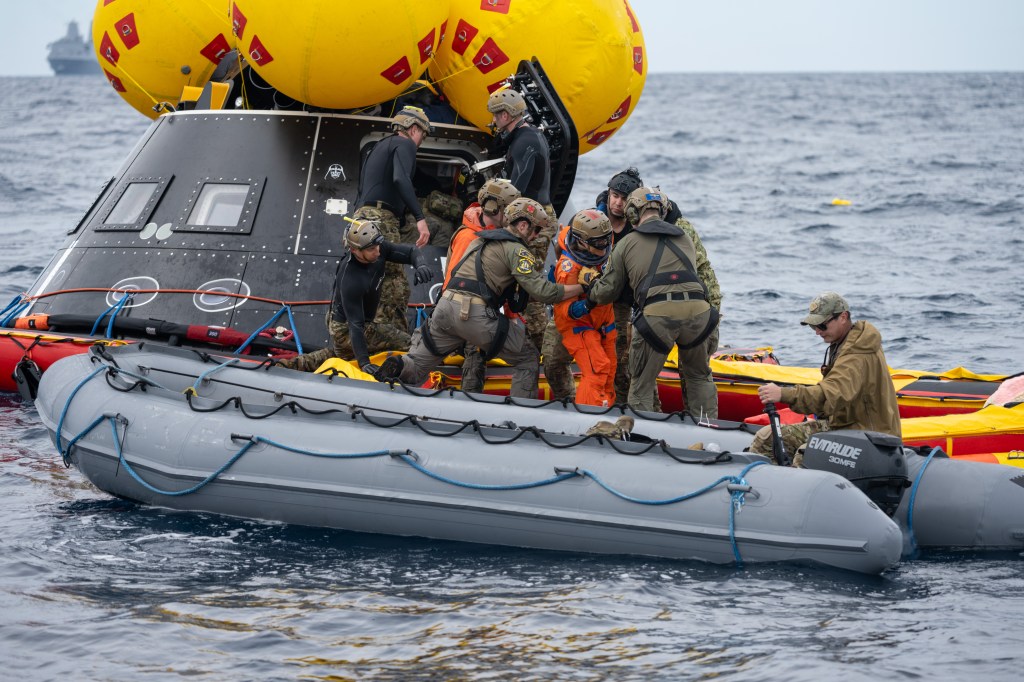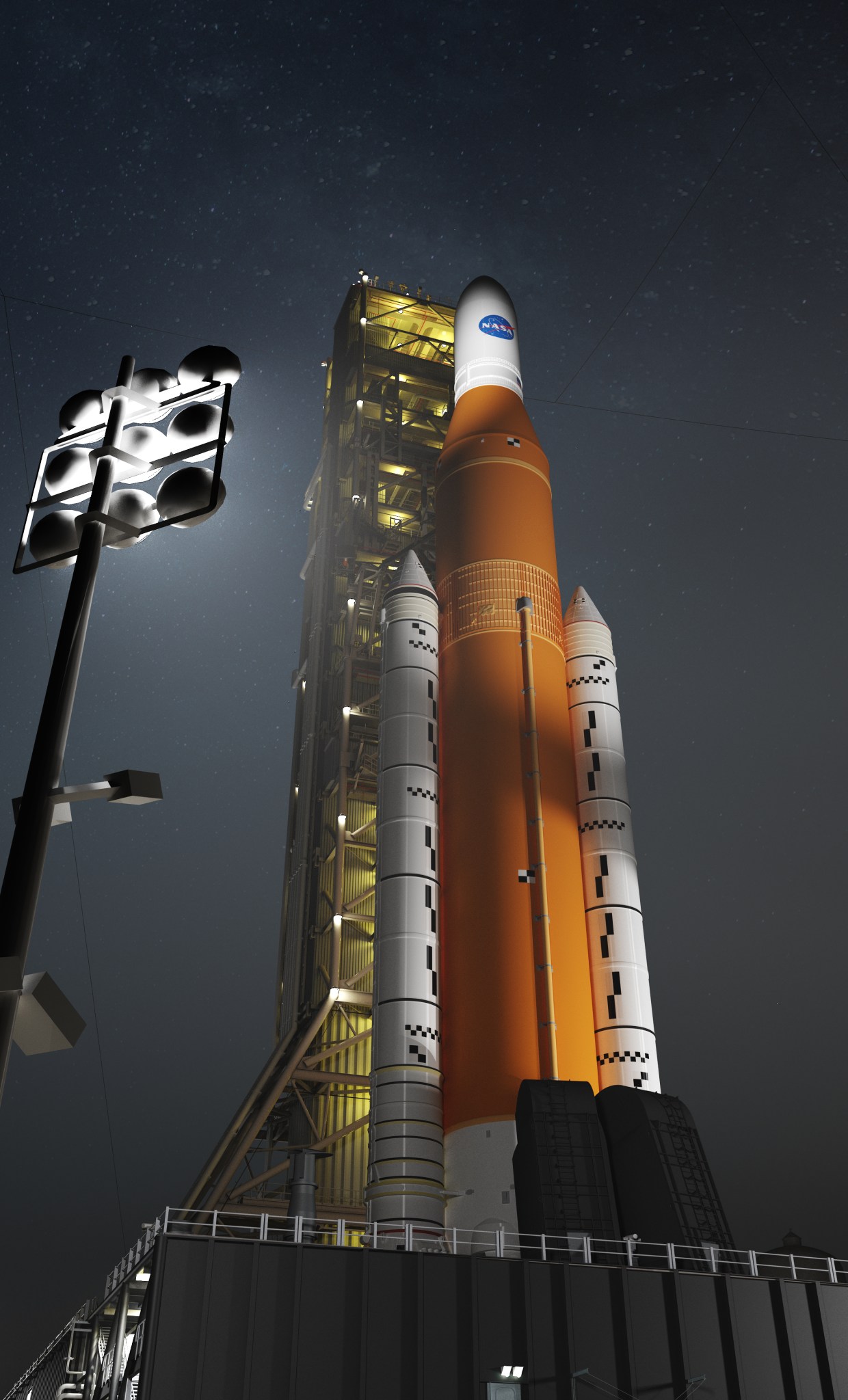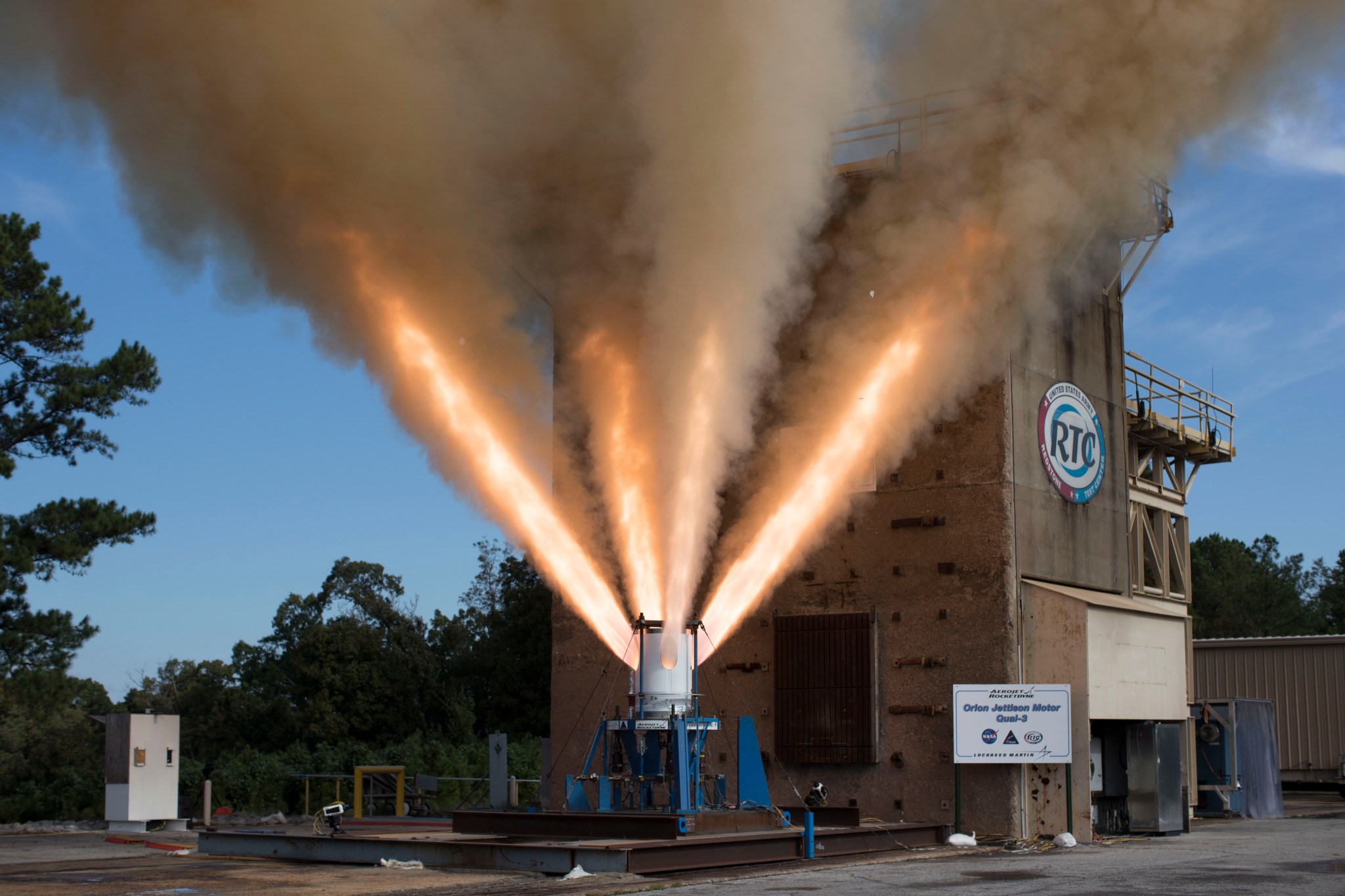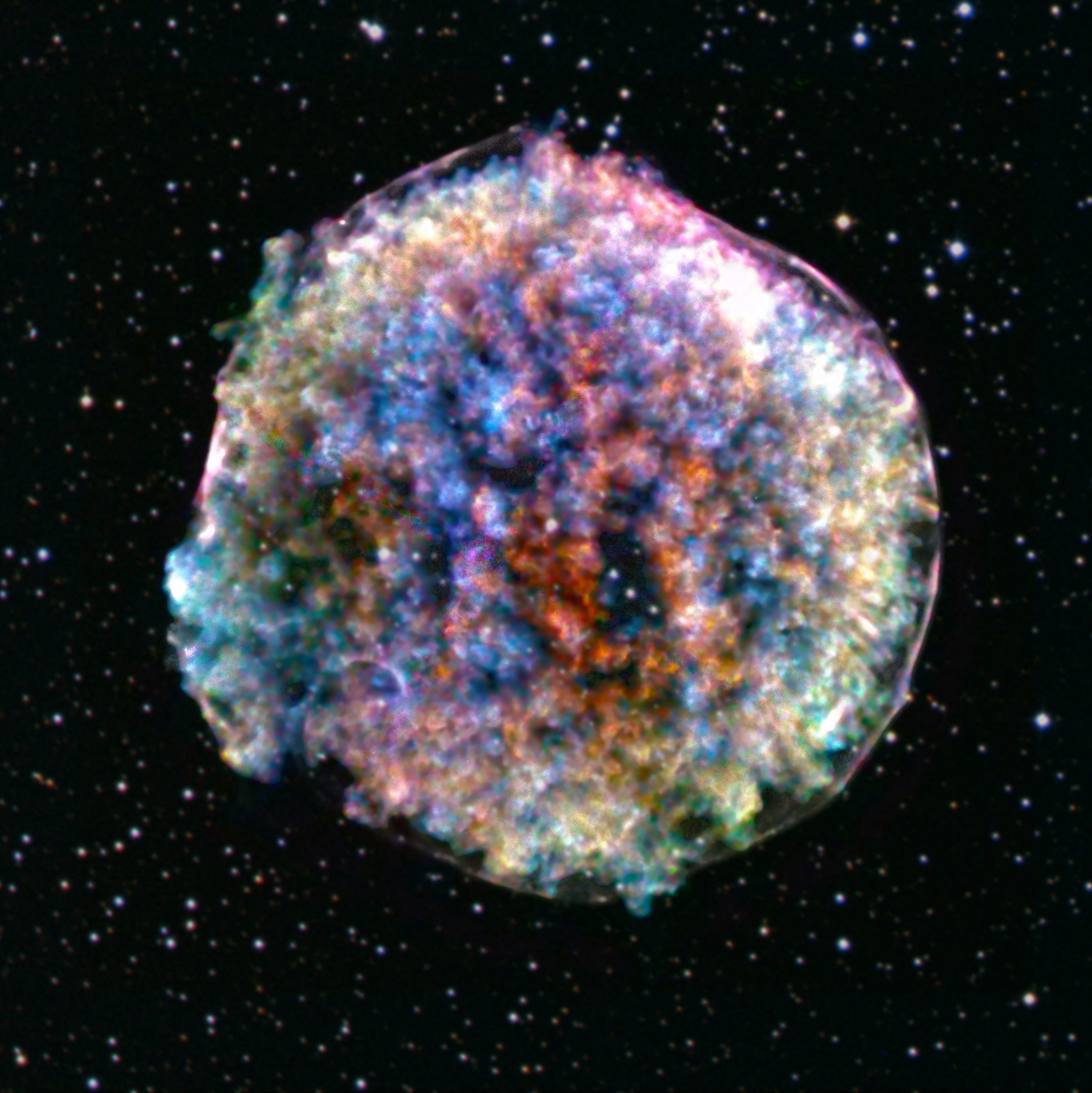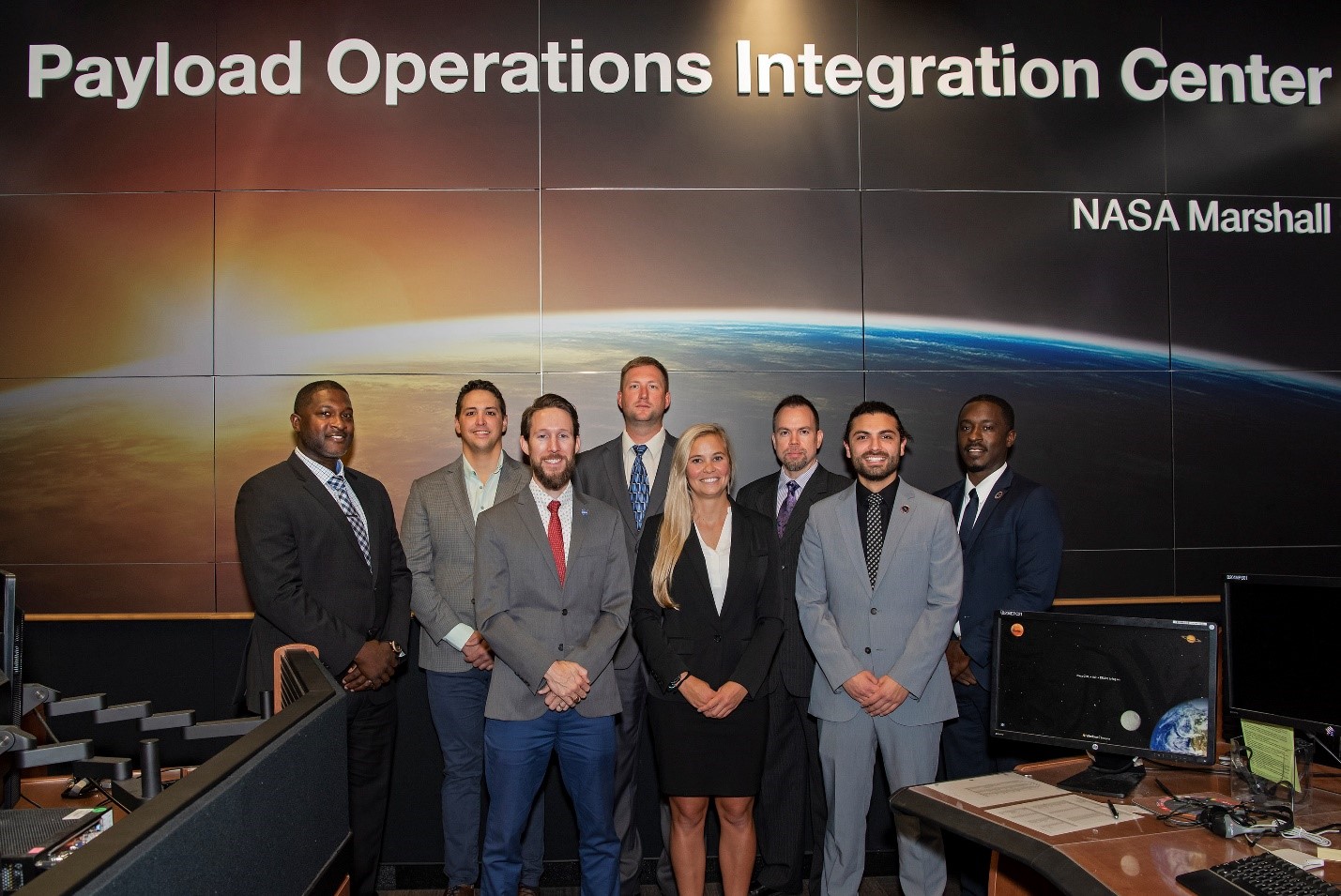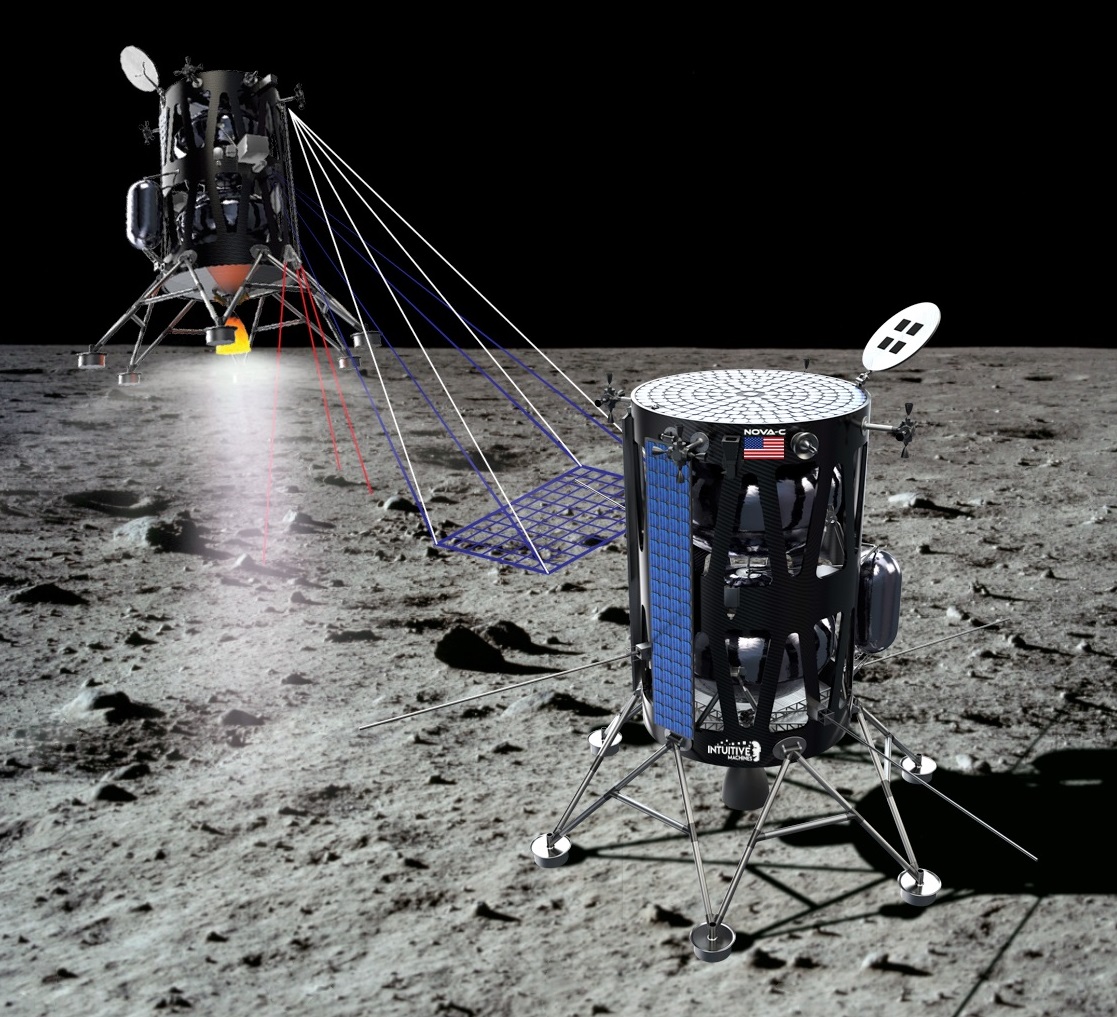In This Week’s Star
- NASA Commits to Future Artemis Missions with More SLS Rocket Stages
- Hot Fire Test Qualifies Orion’s Jettison Motor for NASA Missions to the Moon
- Chandra Documents the Clumpy, Lumpy Death of a Star
- Marshall, UAH Host 8th Space Apps Challenge
- Payload and Missions Operations Division Welcomes New Class of Directors
- Lead Propulsion Engineer at Intuitive Machines to Deliver October Tech Talk
- Artemis Hardware Tests Highlighted on ‘This Week @NASA’
- This Week in NASA History: Launch of USMP-1 – Oct. 22, 1992
NASA Commits to Future Artemis Missions with More SLS Rocket Stages
NASA has taken the next steps toward building Space Launch System rocket core stages to support as many as 10 Artemis missions, including the mission that will carry the first woman and next man to the Moon by 2024.
The agency intends to work with Boeing, the current lead contractor for the core stages of the rockets that will fly on the first two Artemis missions, for the production of SLS rockets through the next decade. The core stage is the center part of the rocket that contains the two giant liquid fuel tanks. Towering 212 feet with a diameter of 27.6 feet, it will store cryogenic liquid hydrogen and liquid oxygen and all the systems that will feed the stage’s four RS-25 engines. It also houses the flight computers and much of the avionics needed to control the rocket’s flight.
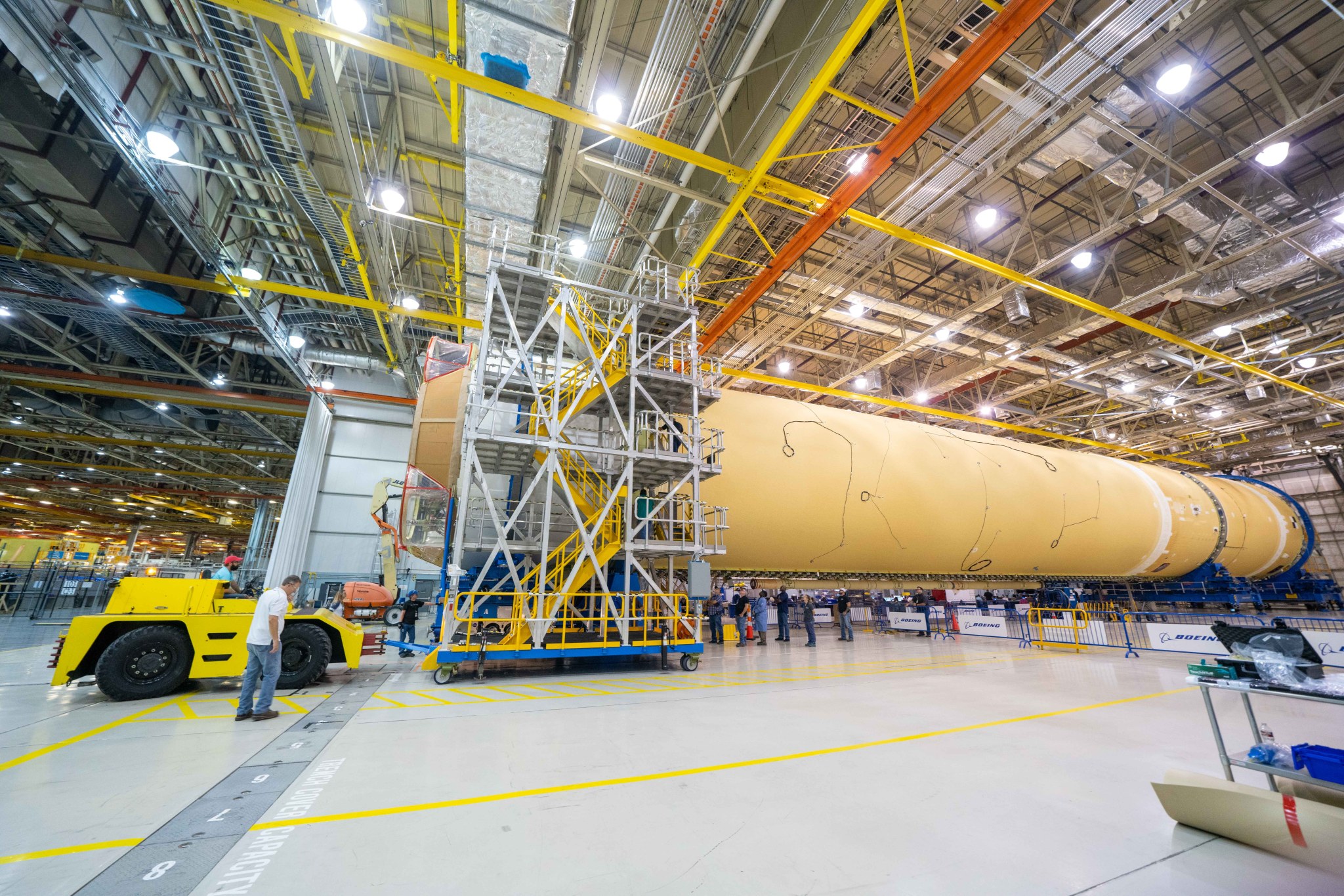
NASA has provided initial funding and authorization to Boeing to begin work toward the production of the third core stage and to order targeted long-lead materials and cost-efficient bulk purchases to support future builds of core stages. This action allows Boeing to manufacture the third core stage in time for the 2024 mission, Artemis III, while NASA and Boeing work on negotiations to finalize the details of the full contract within the next year. The full contract is expected to support up to 10 core stages and up to eight Exploration Upper Stages.
“It is urgent that we meet the president’s goal to land astronauts on the Moon by 2024, and SLS is the only rocket that can help us meet that challenge,” NASA Administrator Jim Bridenstine said. “These initial steps allow NASA to start building the core stage that will launch the next astronauts to set foot on the lunar surface and build the powerful exploration upper stage that will expand the possibilities for Artemis missions by sending hardware and cargo along with humans or even heavier cargo needed to explore the Moon or Mars.”
Boeing’s current contract includes the SLS core stages for the Artemis I and Artemis II missions and the first EUS, as well as structural test articles and the core stage pathfinder. The new contract is expected to realize substantial savings compared to the production costs of core stages built during the design, development, test and evaluation phase by applying lessons learned during first-time builds and gaining efficiencies through bulk purchases.
“NASA is committed to establishing a sustainable presence at the Moon, and this action enables NASA to continue Space Launch System core stage production in support of that effort to help bring back new knowledge and prepare for sending astronauts to Mars,” said John Honeycutt, SLS Program manager at NASA’s Marshall Space Flight Center. “SLS is the only rocket powerful enough to send Orion, astronauts and supplies to the Moon on a single mission, and no other rocket in production today can send as much cargo to deep space as the Space Launch System rocket.”
For the first three Artemis missions, the SLS rocket uses an interim cryogenic propulsion stage to send the Orion spacecraft to the Moon. The SLS rocket is designed to meet a variety of mission needs by evolving to carry greater mass and volume with a more powerful EUS. The EUS is an important part of Artemis infrastructure needed to send astronauts and large cargo together, or larger cargo-only shipments, to the Moon, Mars and deep space. NASA aims to use the first EUS on the Artemis IV mission. Additional core stages and upper stages will support either crewed Artemis missions, science missions or cargo missions.
“The exploration upper stage will truly open up the universe by providing even more lift capability to deep space,” said Julie Bassler, SLS Stages manager at Marshall. “The exploration upper stage will provide the power to send more than 45 metric tons, or 99 thousand pounds, to lunar orbit.”
The Space Launch System rocket, Orion spacecraft, Gateway and Human Landing System are part of NASA’s backbone for deep space exploration. Work is well underway on both the Artemis I and II rockets, with core stage assembly nearly complete at NASA’s Michoud Assembly Facility. Soon, the stage will be shipped to NASA’s Stennis Space Center, where it will undergo Green Run testing, an integrated test of the entire new stage that culminates with the firing of all four RS-25 engines. Upon completion of the test, NASA’s Pegasus barge will take the core stage to NASA’s Kennedy Space Center where it will be integrated with other parts of the rocket and Orion for Artemis I. Boeing also has completed manufacturing most of the main core stage structures for Artemis II.
Hot Fire Test Qualifies Orion’s Jettison Motor for NASA Missions to the Moon
A motor built by Aerojet Rocketdyne for the Launch Abort System on NASA’s Orion spacecraft was successfully tested by engineers Oct. 16 at the U.S. Army’s Redstone Test Center on Redstone Arsenal.
During the third and final hot fire test, the jettison motor was fired for less than two seconds in ambient temperatures to produce more than 40,000 pounds of thrust. With the series of static tests completed, Orion’s Launch Abort System jettison motor is qualified and ready for flight on the Artemis II mission with astronauts.
The Launch Abort System will safely lift the Orion crew module away from the Space Launch System rocket in the event of emergency on the launch pad or during ascent. It consists of three solid rocket motors: The abort motor pulls the crew module away from the launch vehicle; the attitude control motor steers and orients the capsule; then the jettison motor ignites to separate the launch abort system from Orion for parachute deployment and a safe crew landing. The jettison motor also is the only part of the Launch Abort System that operates during normal mission scenarios and detaches from Orion once it is no longer needed.
The Launch Abort System consists of two parts: the fairing assembly, which is a shell composed of a lightweight composite material that protects the capsule from the heat, air flow and acoustics of the launch, ascent and abort environments; and the launch abort tower, which includes the abort motor, attitude control motor and jettison motor. Fully jettisoning the entire Launch Abort System once it’s no longer needed will free Orion of thousands of pounds that will make it lighter for its trips near the Moon.
The Orion launch abort system also offers the highest thrust and acceleration escape system ever tested. Orion’s puller-style system with the tower above the spacecraft allows for considerable control as well, enabling the Launch Abort System to move quickly and away from the 8.8 million pounds of thrust from the SLS rocket during an abort. It is the first puller system capable of controlled orientation after separating from the rocket.
The jettison motor is built by Aerojet Rocketdyne through a contract by NASA’s prime contractor for Orion, Lockheed Martin. The Launch Abort System was stress tested earlier this year during the successful Ascent Abort-2 test.
NASA’s Artemis lunar exploration program includes sending a suite of new science instruments and technology demonstrations to study the Moon, landing the first woman and next man on the lunar surface by 2024 and establishing a sustained presence by 2028. Orion will sustain astronauts in deep space, provide emergency abort capability and support a safe reentry from lunar return velocities. The agency will leverage its Artemis experience and technologies to prepare for the next giant leap — sending astronauts to Mars.
For more information about the Orion spacecraft and its Launch Abort System, visit: https://www.nasa.gov/orion.
Chandra Documents the Clumpy, Lumpy Death of a Star
In 1572, Danish astronomer Tycho Brahe was among those who noticed a bright, new object in the constellation Cassiopeia. Adding fuel to the intellectual fire that Copernicus started, Tycho showed this “new star” was far beyond the Moon, and that it was possible for the universe beyond the Sun and planets to change.
Astronomers now know Tycho’s star was not new at all. Rather it signaled the death of a star in a supernova, an explosion so bright it can outshine the light from an entire galaxy. This particular supernova was a Type Ia, which occurs when a white dwarf star pulls material from, or merges with, a nearby companion star until a violent explosion is triggered. The white dwarf star is obliterated, sending debris hurtling into space.
As with many supernova remnants, the Tycho supernova remnant glows brightly in X-ray light because shock waves — similar to sonic booms from supersonic aircraft — generated by the stellar explosion heat the debris up to millions of degrees.
In its two decades of operation, NASA’s Chandra X-ray Observatory, managed by NASA’s Marshall Space Flight Center, has captured unparalleled X-ray images of many supernova remnants and revealed an intriguing pattern of bright clumps and fainter areas in Tycho. What caused this thicket of knots in the aftermath of this explosion? Did the explosion itself cause this clumpiness, or was it something that happened afterward?
This latest image of Tycho from Chandra is providing clues. To emphasize the clumps in the image and the three-dimensional nature of Tycho, scientists selected two narrow ranges of X-ray energies to isolate material — silicon, colored red — moving away from Earth, and moving toward us — also silicon, colored blue. The other colors in the image — yellow, green, blue-green, orange and purple — show a broad range of different energies and elements, and a mixture of directions of motion. In this new composite image, Chandra’s X-ray data have been combined with an optical image of the stars in the same field of view from the Digitized Sky Survey.
By comparing the Chandra image of Tycho to two different computer simulations, researchers were able to test their ideas against actual data. One of the simulations began with clumpy debris from the explosion. The other started with smooth debris from the explosion and then the clumpiness appeared afterward as the supernova remnant evolved and tiny irregularities were magnified.
A statistical analysis using a technique sensitive to the number and size of clumps and holes in images was then used. Comparing results for the Chandra and simulated images, scientists found that the Tycho supernova remnant strongly resembles a scenario in which the clumps came from the explosion itself. While scientists are not sure how, one possibility is that star’s explosion had multiple ignition points, like dynamite sticks being set off simultaneously in different locations.
Understanding the details of these stellar explosions is important because it may improve reliable use of Type Ia supernovae as “standard candles,” or objects with known inherent brightness, which scientists use to determine their distance. This is very important for studying the expansion of the universe. These supernovae also sprinkle life-essential elements such as iron and silicon into new generations of stars and planets.
A paper describing these results appeared in the July 10 issue of The Astrophysical Journal. The authors are Toshiki Sato of NASA’s Goddard Space Flight Center and RIKEN in Saitama, Japan; John (Jack) Hughes of Rutgers University in Piscataway, New Jersey; Brian Williams of Goddard; and Mikio Morii of The Institute of Statistical Mathematics in Tokyo, Japan.
Another team of astronomers, led by Gilles Ferrand of RIKEN, has constructed their own 3D computer models of a Type Ia supernova remnant as it changes with time. Its conclusion is similar to that made by Sato and his team. A paper describing the results by Ferrand and co-authors appeared in the June 1 issue of The Astrophysical Journal.
The Smithsonian Astrophysical Observatory’s Chandra X-ray Center controls science and flight operations from Cambridge, Massachusetts.
Marshall, UAH Host 8th Space Apps Challenge
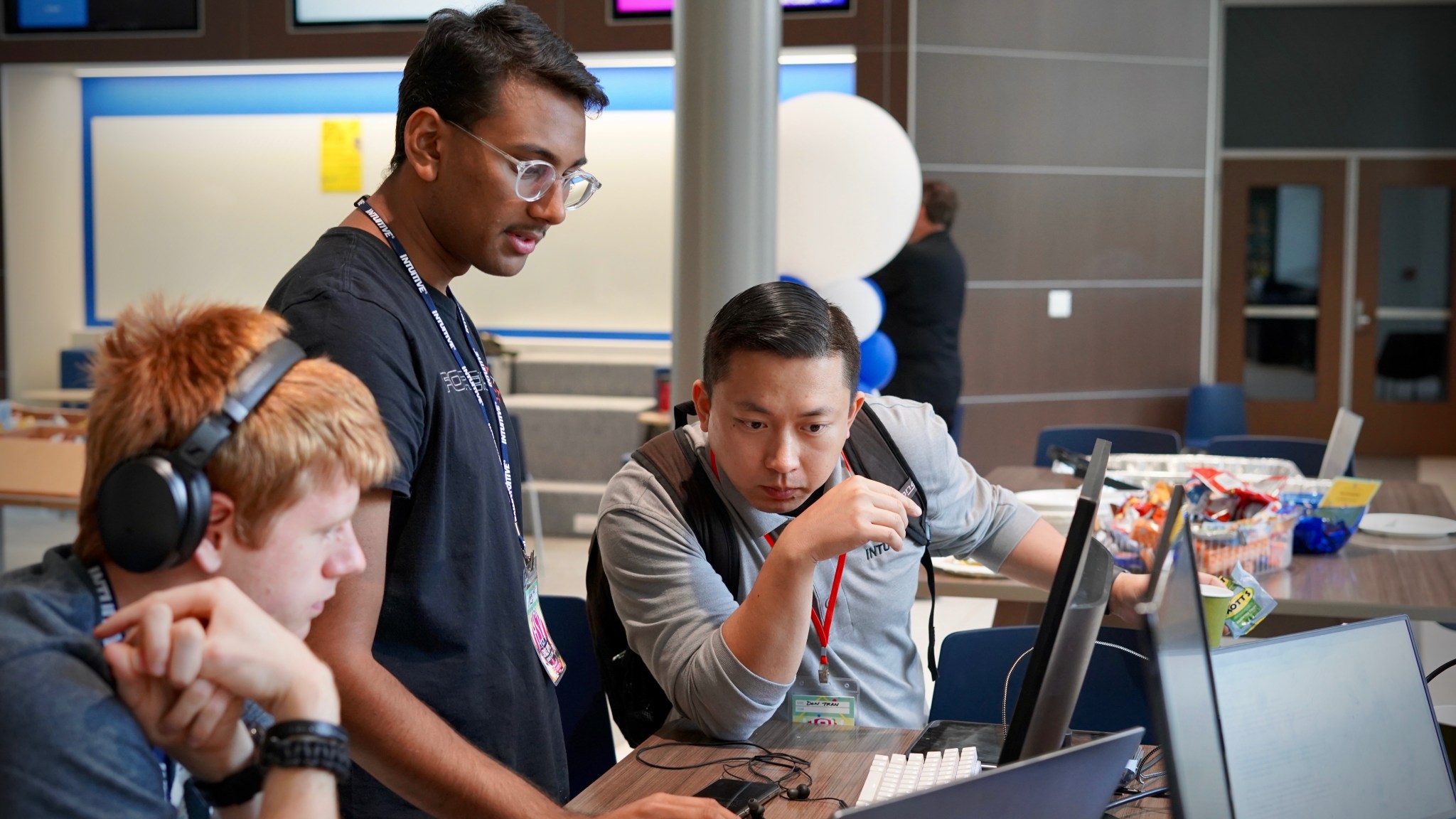
Dozens of enterprising individuals gathered Oct. 18-20 at the University of Alabama in Huntsville — along with thousands more participating virtually around the globe — for the eighth annual NASA International Space Apps Challenge. Since its founding in 2012, the Space Apps Challenge has become the world’s largest global hackathon, challenging programmers to use NASA’s open data to deliver innovative solutions for social and technological hurdles faced on Earth and in space. (UAH/Urban Engine/Gavin Richardson)

Each year, teams of technologists, scientists, designers, entrepreneurs and artists spend 48 hours tackling challenges proposed by NASA in the Space Apps Challenge, developing educational, engaging smartphone and computer apps, games, videos, teaching tools and more. More than 29,000 contributors took part this year, representing some 230 team sites in nearly 80 countries. Learn more here. (UAH/Urban Engine/Gavin Richardson)
Payload and Missions Operations Division Welcomes New Class of Directors
The Payload and Mission Operations Division at NASA’s Marshall Space Flight Center recently celebrated the selection of the largest new class of payload operations directors since the push toward International Space Station commercialization. The class members are Stacey Steele, Michael Vigo, Ian Howley, Luke Bingaman, Jennifer McMillian, Luke Mays, Carlos Barreto and Nick Benjamin.
Payload operations directors are real-time flight controllers for the space station. They manage and direct the 24/7 operations of scientific payloads aboard the space station from the Payload Operations Integration Center. The payload operations director is the single point of authority to the International Space Station flight director at NASA’s Johnson Space Center for all of NASA’s payload operations.
“This is a highly diverse group,” said Dwight Mosby, manager of the Operations Director’s Office. “The class consists of two veterans, a member of the National Guard, a Ph.D. and former payload developer, a former German space agency flight director, a materials scientist, two team leads and a former college football player. This team will help usher in a new era of low-Earth orbit commercialization. They will be leading NASA’s future operations teams.”
The payload operations director oversees team members responsible for managing payload mission planning, ground commanding of space station payloads, communications with the crew and use of the payload support, video and data systems. They ensure compliance with established safety requirements, flight rules and payload regulations. The position also leads the review and approval of all change requests to the timeline.
The payload operations director certification/training program takes about eight months to complete.
Lead Propulsion Engineer at Intuitive Machines to Deliver October Tech Talk
Rob Morehead, lead propulsion engineer at Intuitive Machines in Houston, will deliver the October Tech Talk at NASA’s Marshall Space Flight Center on Oct. 24 at 1 p.m. in Room 1201 of Building 4203. Intuitive Machines is developing the Nova-C Lunar Lander, illustrated above, as part of NASA’s Commercial Lunar Payload Services. Morehead will discuss the lander and the unique technologies that it will employ. Intuitive Machines has a history of collaborating with Marshall on rocket engine testing. (NASA)
Artemis Hardware Tests Highlighted on ‘This Week @NASA’
A test of the Orion spacecraft’s Launch Abort System and practice movements of NASA’s Space Launch System rocket’s pathfinder unit are highlighted in “This Week @NASA,” a weekly video program broadcast nationwide on NASA-TV and posted online.
On Oct. 16 at the U.S. Army’s Redstone Test Center on Redstone Arsenal, engineers conducted a successful hot fire test of the jettison motor for NASA’s Orion spacecraft’s Launch Abort System. In the unlikely event of an emergency on the launch pad or during ascent, the Launch Abort System will safely lift Orion and its crew away from the rocket. The static test is the final in a series of three to qualify the jettison motor for human spaceflight on the Artemis II mission — the first integrated test flight of Orion and SLS, with a crew of astronauts aboard.
On Oct. 17, crews inside the Vehicle Assembly Building at NASA’s Kennedy Space Center practiced lifting, moving and stacking operations that will be needed to prepare the SLS for future missions. They used a full-size mockup known as the SLS core stage pathfinder. The practice, which is expected to last all of October, is part of preparations for the Artemis missions to the Moon.
View this and previous episodes at “This Week @NASA” on NASA’s YouTube page.
This video is available for download from NASA’s Image and Video Library: https://images.nasa.gov/details-NHQ_2019_1018_The%20First%20All-Woman%20Spacewalk%20Outside%20the%20Space%20Station%20on%20This%20Week%20@NASA%20%E2%80%93%20October%2018,%202019 Credits: NASA
This Week in NASA History: Launch of USMP-1 – Oct. 22, 1992
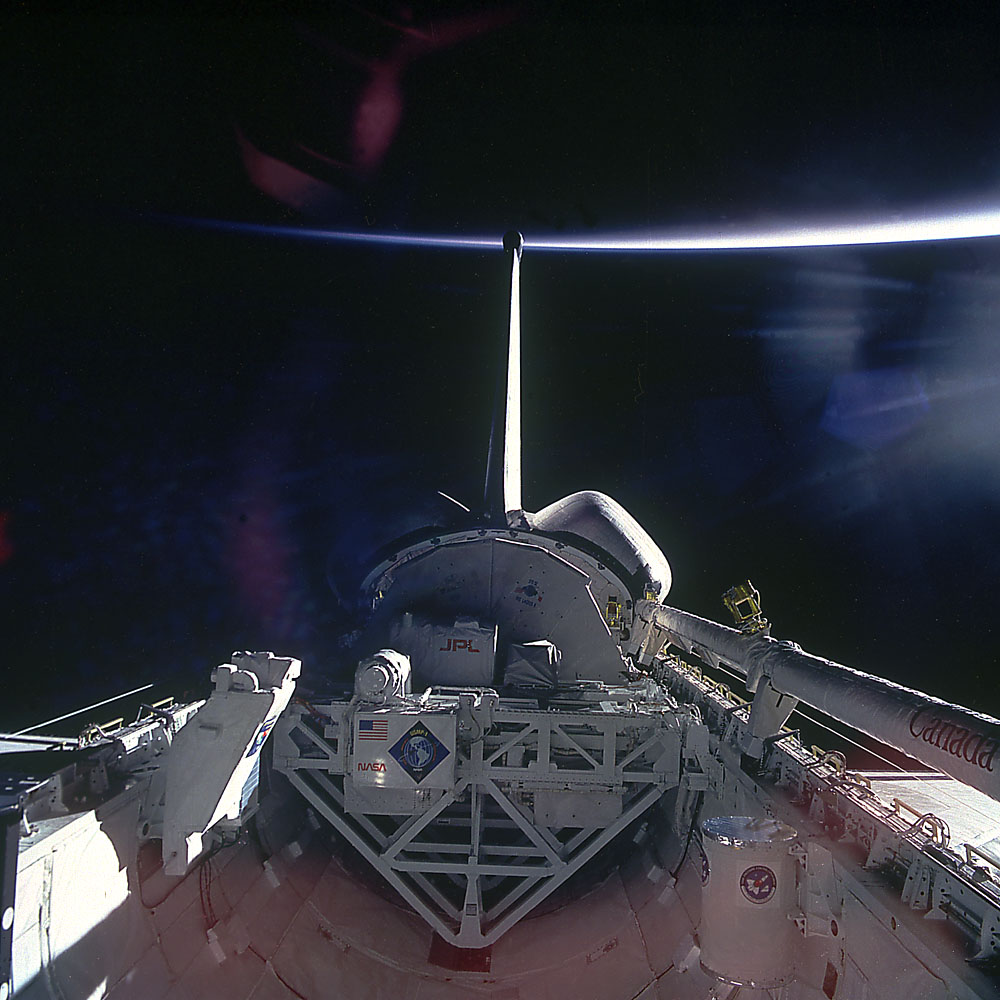
This week in 1992, the United States Microgravity Payload-1 was launched aboard the space shuttle Columbia, mission STS-52, from NASA’s Kennedy Space Center. The USMP program was a series of missions developed by NASA to provide scientists with the opportunity to conduct research in the unique microgravity environment of the space shuttle’s payload bay. The USMP-1 payload carried three investigations. Two were basic fluid and metallurgical processes in microgravity. The third characterized the microgravity environment onboard the shuttle. The USMP program was managed by NASA’s Marshall Space Flight Center. Here, USMP-1 is seen in the cargo bay of Columbia. The NASA History Program is responsible for generating, disseminating and preserving NASA’s remarkable history and providing a comprehensive understanding of the institutional, cultural, social, political, economic, technological and scientific aspects of NASA’s activities in aeronautics and space. For more pictures like this one and to connect to NASA’s history, visit the Marshall History Program’s webpage. (NASA)





